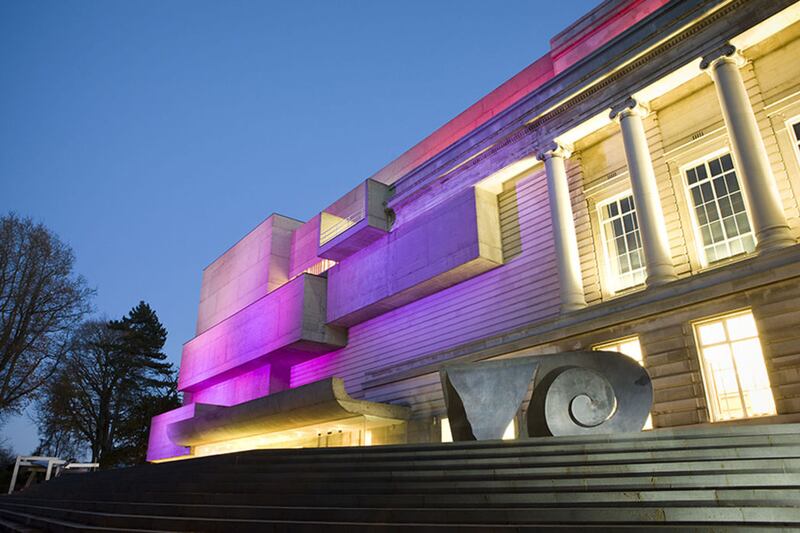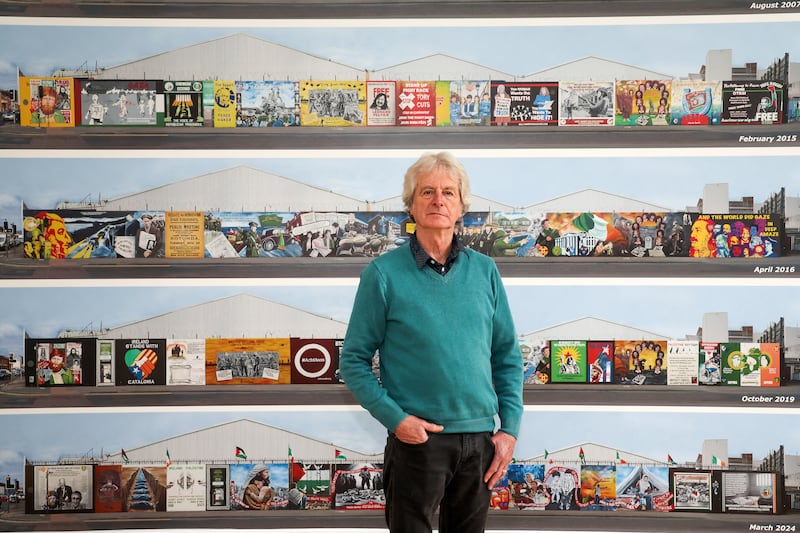This is a tale of a love across the religious divide, the 1916 Rising, an assassination reportedly on the direct orders of Michael Collins, the Jesuits and a priceless masterpiece on display in Belfast, but only for the next few days.
It was four years after her husband was shot dead on a street in Co Wexford that Marie Lea- Wilson attended an auction while on holidays in Edinburgh.
Mrs Lea-Wilson, known to her friends as Monica, bid on an arresting piece of work attributed to the Dutch artist, Gerard Von Honthurst, and titled ‘The Betrayal of Christ’, She paid £8, over £600 in today’s money.
She brought the artwork back to Dublin where she was pursuing a medical career. In the early 1930s, in gratitude to the comfort she received following the death of her husband, the widow gifted the painting to the Jesuits of Leeson Street. It hung in their dining room wall for the next six decades.
The later Dr Lea-Wilson, from the well-to-do Ryan family of Charleville in Cork, met then in 1914 married Percival Lea-Wilson, a Protestant Englishman and member of the RIC. A papal dispensation was needed for the mixed union.
Captain Lea-Wilson went to war with the Royal Irish Rifles but it was while on leave during the 1916 Easter Rising the trajectory of both their lives changed – and how in a strange way two paintings by Michelangelo Marisi da Caravaggio eventually ended up side by side at the Ulster Museum.
The story down the decades was that Captain Lea-Wilson was one of those in charge of British troops at the Rotunda Hospital following the rising.
Michael Collins reportedly witnessed Lea-Wilson degrading and humiliating Proclamation signatory Tom Clarke, including forcing him to strip. It is a scene recreated in the limited drama series ‘Rebellion’.
In 1920, the by then RIC district inspector was shot dead as he walked along a street in Gorey, Co Wexford, a revenge killing ordered by Collins. Dr Lea-Wilson always maintained the killing was linked more to her husband’s investigation of the activities of the local IRA.

Nevertheless, had the grieving widow not lost her husband she might never have gone on that holiday to Edinburgh, attended the auction and bid for the painting.
Certainly, it was because of the comfort given to her by the Jesuits, particularly by Fr Thomas Finlay, that she gratefully gifted the artwork to the society.
In the late 1980s, a dogged Italian graduate student on a search for Caravaggio’s ‘The Taking of Christ’, lost for hundred of years, traced the painting to Edinburgh but then hit a dead end.
Entirely separately, and better late than never, the Jesuits in the early 1990s called in an expert, Sergio Benedetti of the National Gallery of Ireland, to evaluate their art collection.
Jonathan Harr, in his book ‘The Lost Painting: The Quest for a Caravaggio Masterpiece’, writes: “Squatting on his haunches… his face inches from the surface… the craquelure, the network of fine hairline cracks, was just as he would expect in a painting almost four centuries old… could it possibly be?”.

After comparing notes and further study over a couple of years, it was definitively identified as the lost masterpiece. The Jesuits decided the National Museum should be its home.
In a room in the Ulster Museum, the on-loan painting has been displayed side by side with the Italian’s ‘The Supper at Emmaus’ since May. It is believed the two have not been in the same room since the early 17th century but this is the last week as the paintings will be returned under tight security after September 1, one to Dublin, the other to the National Gallery in London.
Since May, close to 70,000 have viewed the paintings, more than a third of all visitors to the museum since May. Some 97% agreed it felt like a once in a lifetime opportunity to see the two Caravaggio paintings displayed together
A different twist or turn in the strange journey of ‘The Taking of Christ’ over the last more than a hundred years and it might never have happened.






